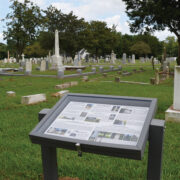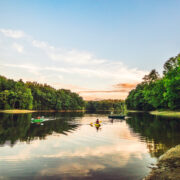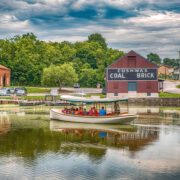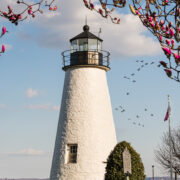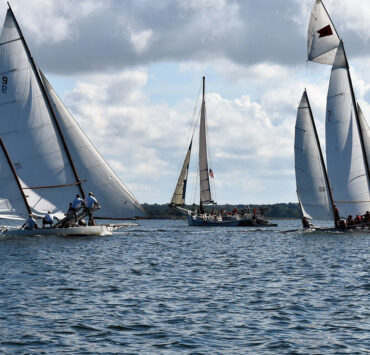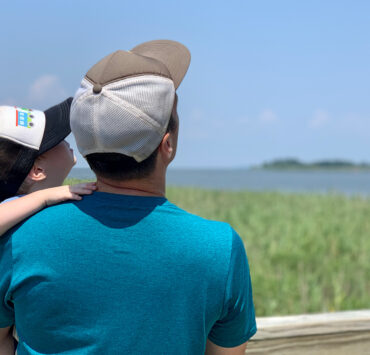Seas The Chance to Be Part Of The New Maryland Dove Construction
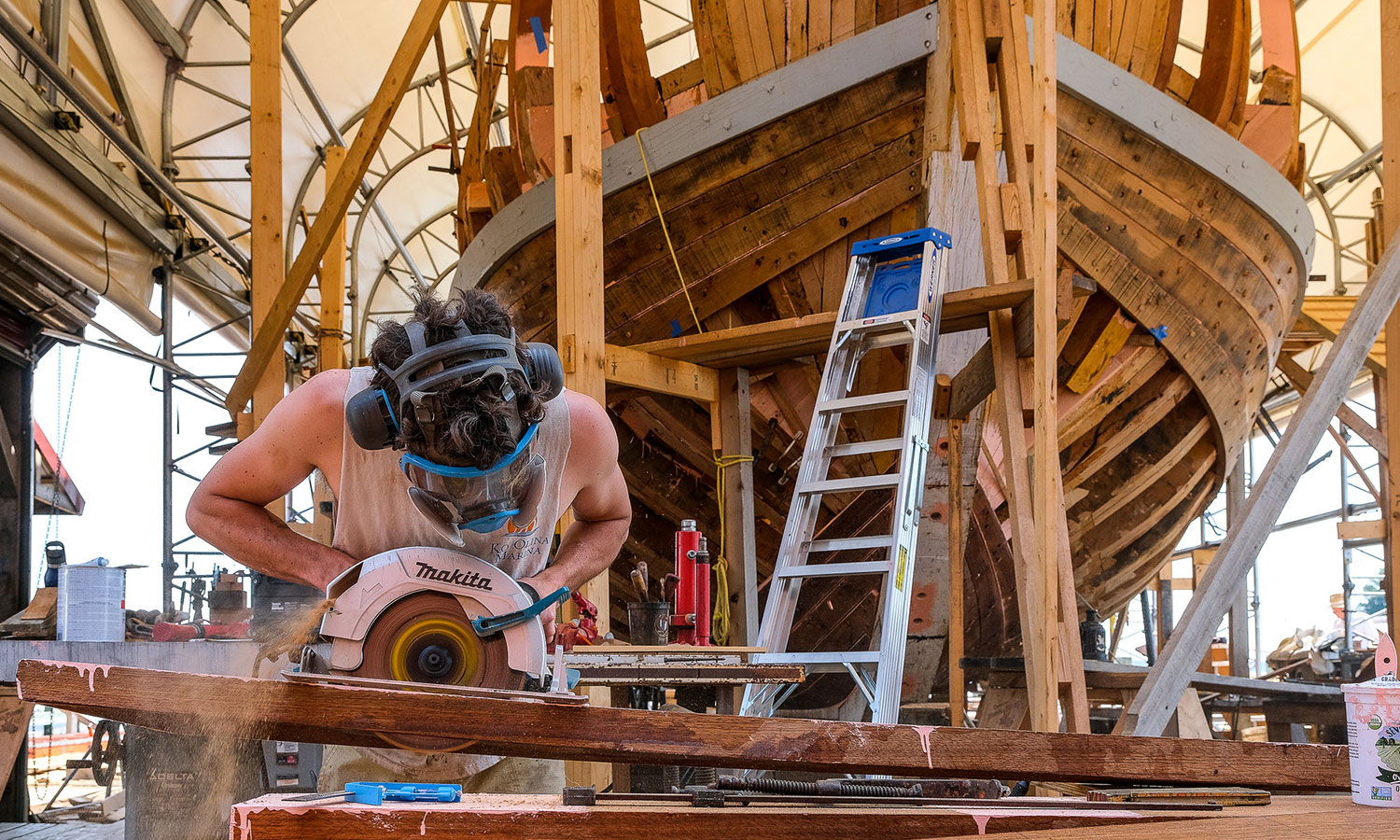
The whirr of electric tools and thwack of hammers sound from the Chesapeake Bay Maritime Museum’s waterfront campus in St. Michaels as the museum’s shipwrights craft the components of a 17th-century type boat from the wood slabs piled nearby. The collaborative venture with Historic St. Mary’s City is a unique undertaking for the CBMM’s Shipyard, which specializes in the repair and restoration of 19th and 20th century Chesapeake Bay workboats. The 40-ton vessel under construction since 2019 is a representation of the Dove, an iconic ship that played a critical role in Maryland history and will be on display at HSMC upon completion.
An understanding of the Dove’s story may better explain why the boat is worthy of such a tribute. In the early 1600s, Englishman Sir George Calvert, the first Lord Baltimore and a Roman Catholic, witnessed the rise of anti-Catholic sentiment in his home country and sought to establish a colony in the New World where people of disparate religious views could peacefully pursue the one thing they all desired: money. Calvert shivered through a winter season at his first try in Newfoundland, Canada, before he abandoned it. Back in England, he eyed the Chesapeake Bay and its warmer climate for his next colonization attempt but died before he could get the OK from King Charles I. Calvert’s son Cecil, the second Lord Baltimore and also a Catholic, carried out his father’s vision and named younger brother Leonard Calvert the colony’s governor.

On November 22, 1633, the ships the Ark and Dove set sail from England with a crew and a couple hundred passengers — a mix of nobles, Catholic priests, and indentured servants. The Ark was the larger of the two and carried the passengers while the Dove likely carried some cargo. Three days into the passage, the convoy encountered a storm in the English Channel. The Ark’s passengers last saw the Dove display her distress lanterns and assumed the ship was a goner. But the Dove limped to a harbor to ride out the weather before she sailed out again. The Ark’s voyage was not immune to misfortune: twelve passengers died after they reportedly imbibed on too much wine on Christmas.
The Ark made an unplanned stop in Barbados on January 3, and a couple of weeks later, the Dove remarkably also arrived at the Caribbean island. The reunited ships struck out together and navigated up the Chesapeake to the Potomac River. They landed at St. Clement’s Island on March 25, 1634 — now celebrated as Maryland Day. Two days later, the colonists bought land from the indigenous Yaocomicos and moved to St. Mary’s City, the first permanent European settlement in what would ultimately become the state of Maryland.
The Ark returned to England shortly thereafter, and the Dove became the colonists’ primary mode of transportation. Later in 1634, the Dove traveled up to the Massachusetts Colony to trade corn for salted cod. The following year, the vessel set sail back to England laden with beaver pelts and timber and was never heard from again. Did she sink in a storm? Was she captured by pirates? Did the crew steer her back to Barbados and its white sand beaches? No one knows for certain. What we do know is that the Dove played an important role in Maryland’s history.
The boat under construction at the CBMM will replace an existing boat of the same name currently on exhibit at HSMC. A fixture at its dock on the St. Marys River since shortly after her completion in 1978, the Maryland Dove offers a tangible connection to the past. “People learn in different ways, but most people are very tactile and experiential learners, as opposed to just reading it in a book,” said Peter Friesen, the director of education at HSMC. “So this is a way for us to teach the public at large about life in the 17th century, specifically the voyage over and what life was like on the ship.”
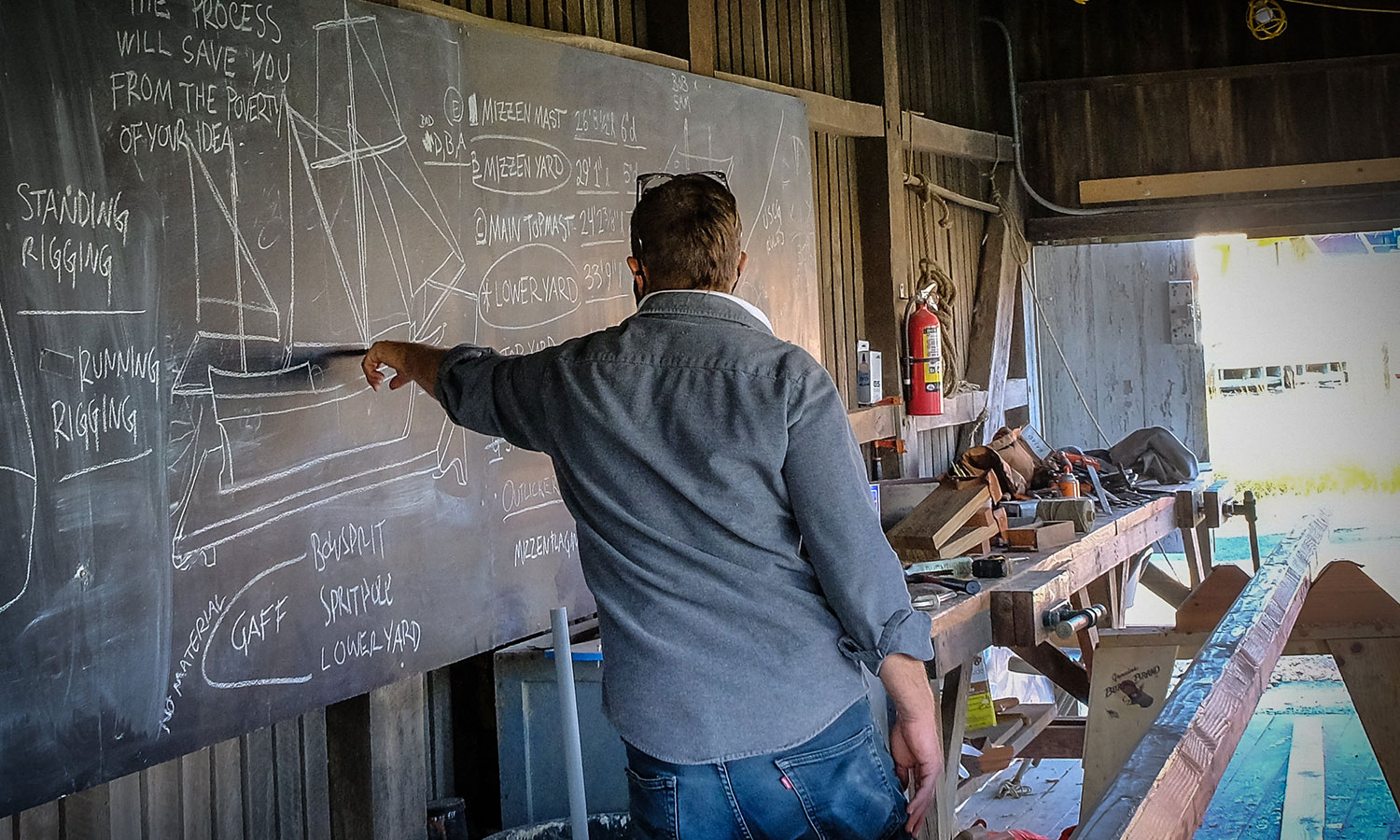
Designed by esteemed naval architect William A. Baker, the existing Maryland Dove is a hybrid between an early 17th-century trading boat like the Dove and the larger, three-masted tobacco merchant ships that plied Maryland’s waters later in the 17th century. Unfortunately, the wooden boat is plagued by rot after decades in the water. On top of that, it’s not certified by the Coast Guard, so only the crew can sail her. Instead of a costly rebuild, the State of Maryland appropriated $5 million for a new Maryland Dove.
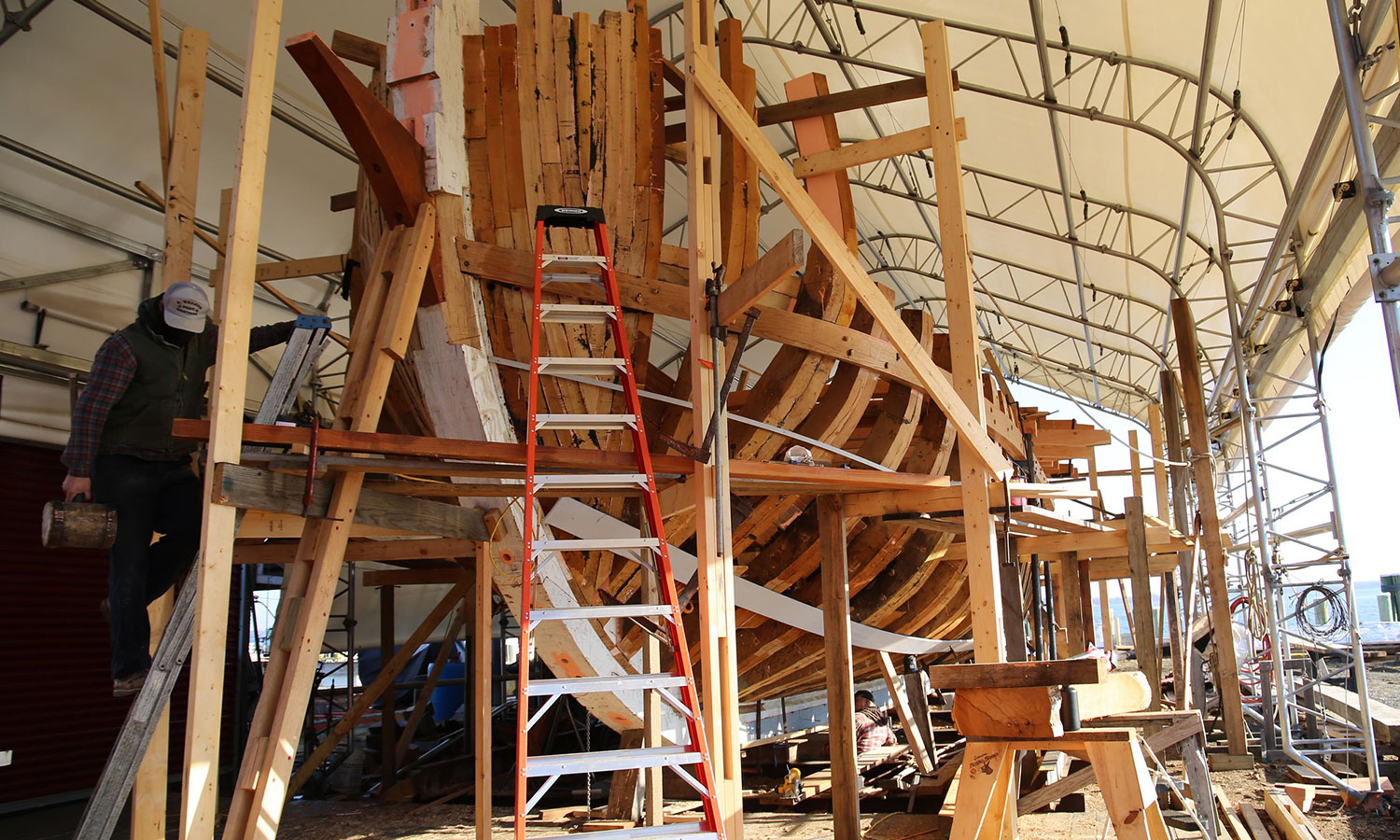
Iver C. Franzen Maritime LLC, an Annapolis-based naval architect who specializes in historic vessels, completed the plans for the new boat. HSMC staff collaborated with the designer and builders to create a design that will both meet modern passenger safety standards and appear more historically accurate than the existing Maryland Dove. “The first thing one would notice if one could put the two ships side by side is that the new Dove has a different rig,” said Will Gates, the maritime curator at HSMC. “It’s a somewhat simpler rig in that it has two masts — a mainmast and a much smaller mizzenmast — that’s in keeping with the number of crew that were documented to have been on the first Dove.” To meet Coast Guard standards, the new Maryland Dove will include a pair of inconspicuously placed diesel engines.
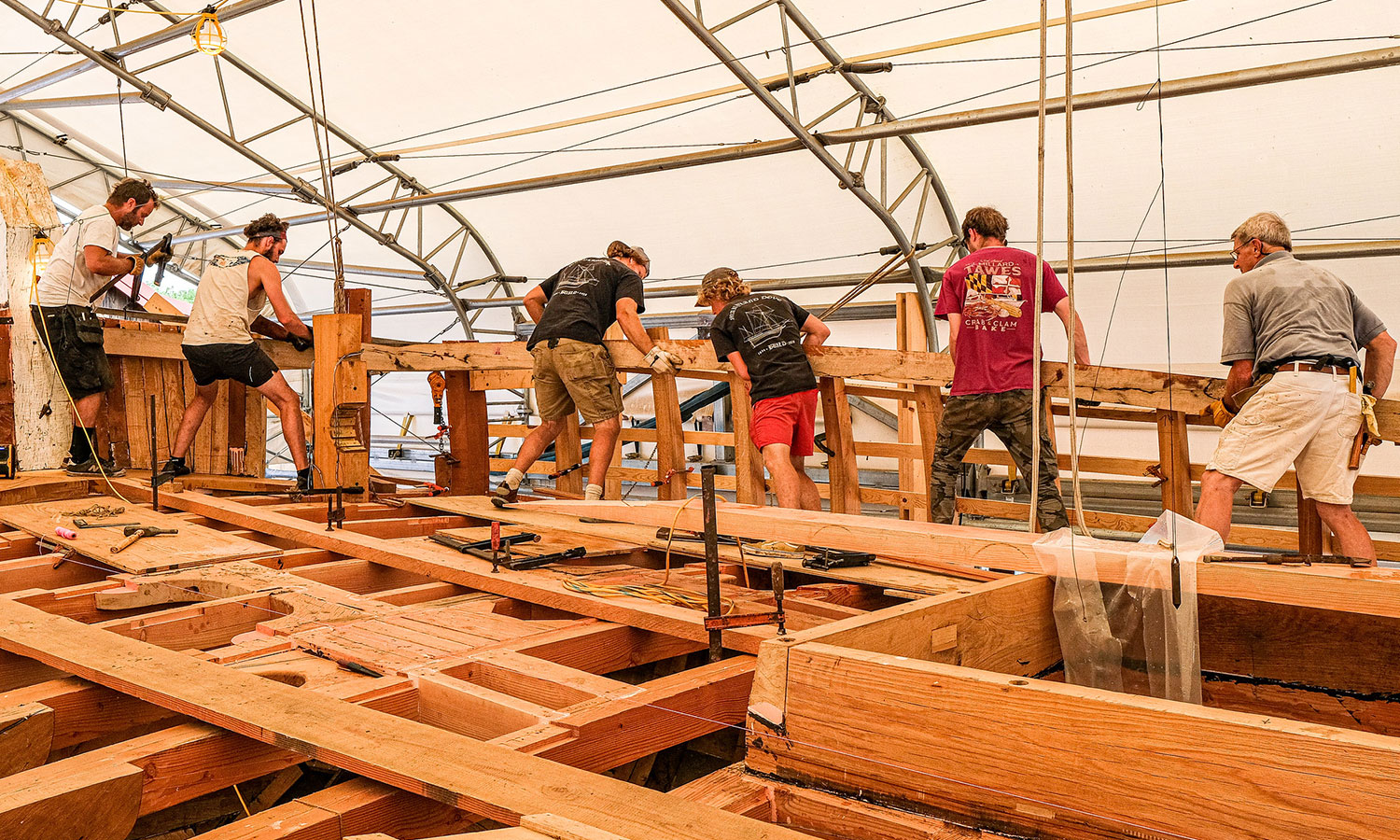
CBMM’s team diligently prepared for the undertaking. Lead shipwright Joe Connor and lead rigger Sam Hilgartner traveled to Stockholm, Sweden, to study a recovered 17th century vessel similar to the Dove and meet with maritime archaeologist Fred Hocker. “Fred compiled a lengthy database of British ships from the 1630s, so we were able to use a lot of his research of actual shipwrecks to inform the details of the new boat,” Connor said.
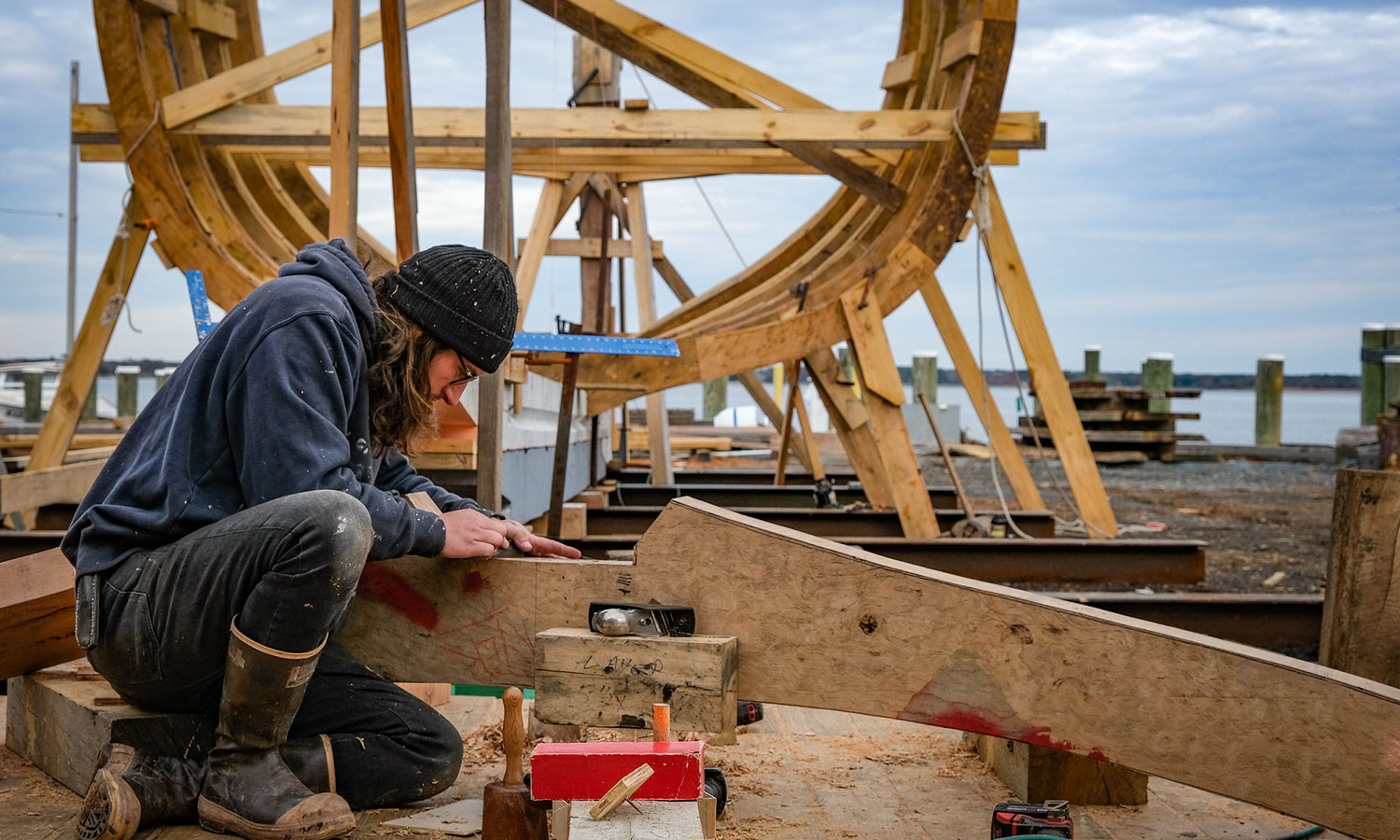
Work began at the CBMM in spring 2019, and museum patrons have witnessed the project’s dozen shipwrights create everything from the 28 Southern live oak frames — some weighing nearly a ton — to thumb-sized metal fasteners. “I think the big ‘wow’ is seeing something built today that isn’t some byproduct of a Lowes,” Connor said. “We’re making every single part of this boat right here, and I think that is a really valuable experience for anybody working on the boat and anybody visiting the project to see that level of problem solving and ingenuity.”
Construction halted in March 2020, and when it resumed, the boatbuilders worked in shifts, wore masks, and sanitized tools. A low barrier has been placed around the Shipyard; however, the sides are open on the tent that shelters the Maryland Dove to allow views, and the crew attempts to regularly walk to the barrier to answer questions. Visitors can get close to the rigging materials under fabrication at the CBMM’s Corn Crib.
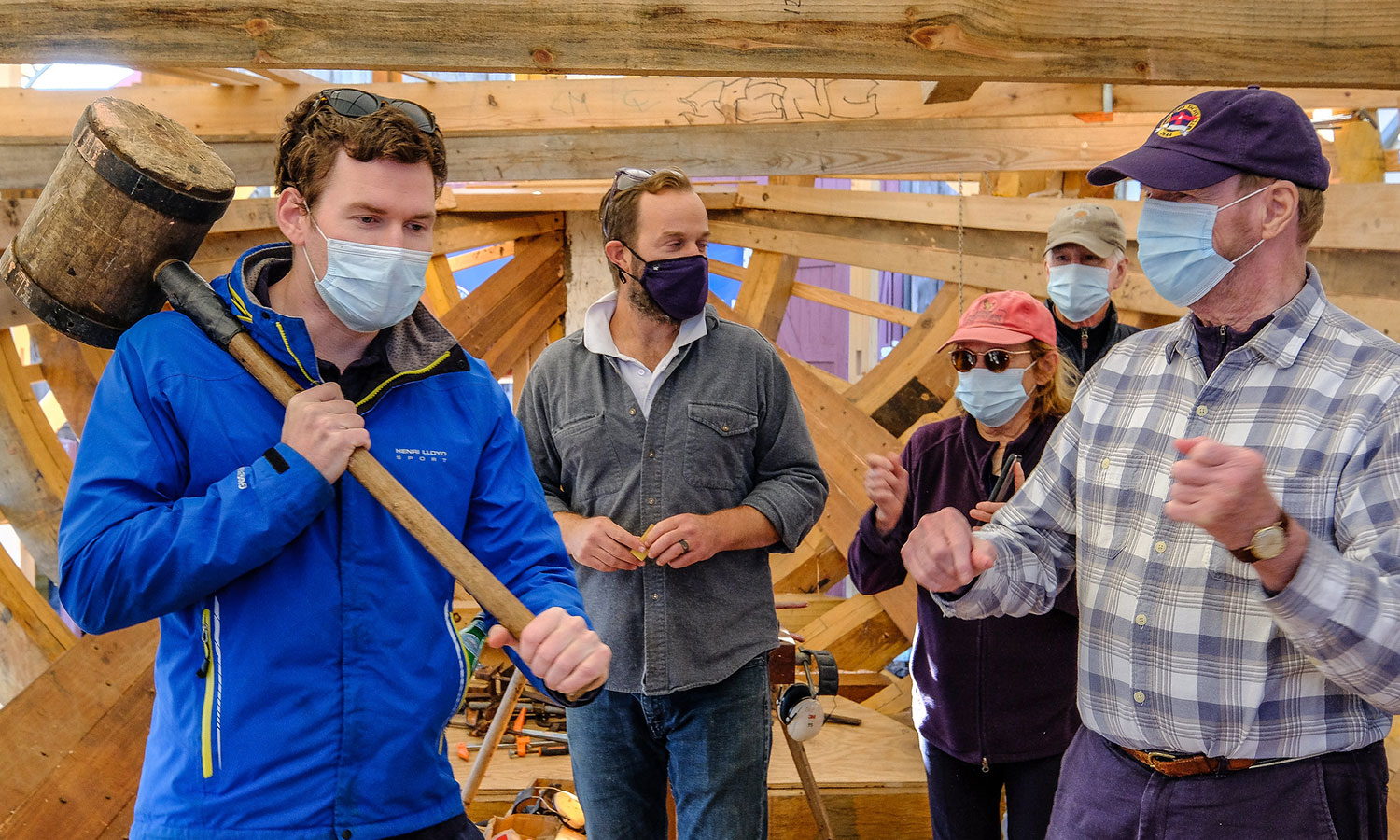
Despite the challenges that came with construction of a ship during a pandemic, Connor has enjoyed the opportunity to participate on a one-of-kind build. “We’re close to the finish line, and there are so many amazing boat parts being made so you want to be part of every one,” he said. “You kind of want to press pause and hold on to it another moment.”
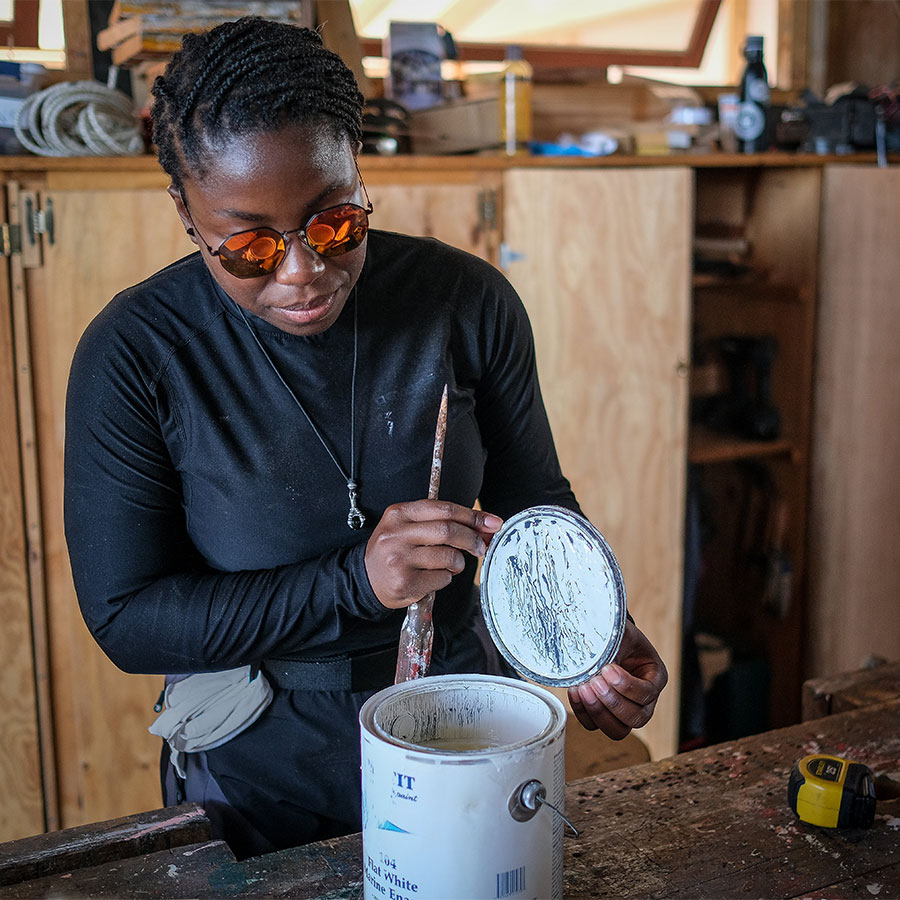
See the Maryland Dove
The new Maryland Dove is under construction at the CBMM and is scheduled to launch by November 2021. Fine-tuning of the ship will continue over the winter before scheduled delivery to HSMC in March 2022.
See the CBMM’s calendar for information on lectures, construction tours, and even opportunities to help build the ship. In the meantime, the 1978 version of the Maryland Dove is still on display at HSMC.
Lead Photo: George Sass
About the Author
Chris Berger
Chris Berger works as an urban planner and is fond of Maryland’s historic architecture, nature, and sporting traditions. He lives in Montgomery County with his wife, daughter, and dog. You canfollow him on Instagram @cjberger1.








